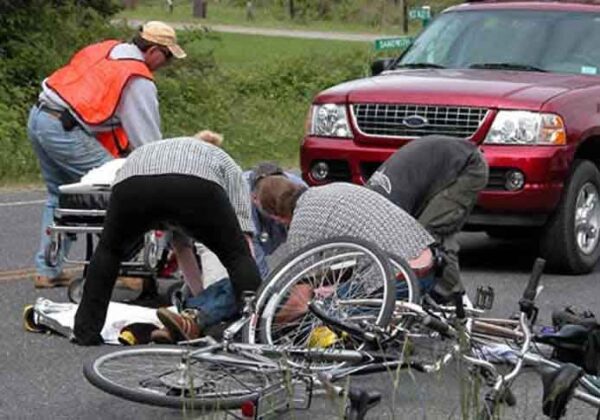
Summer has arrived in Maine, and a busy tourist season is upon us again. To avoid pedestrian-car accident injuries, pedestrians and drivers should exercise caution on the streets. As a pedestrian, take it upon yourself to remain safe by following a few basic steps when walking near traffic zones. Be aware of the flow of traffic. Be alert in parking lots for cars backing out or pulling into parking spaces. When walking through them, walk along the side of the aisles, not down the center. While on the street, stay on designated sidewalks or paths. If there is no sidewalk or path, walk along the side of the road facing traffic.
When Do Most Pedestrian-Vehicle Accidents Happen?
Most pedestrian-vehicle crashes occur between 6 pm and midnight, so you can increase your visibility by wearing light-colored or reflective clothing or even carrying a flashlight. Because they are a source of distraction, be cautious when using earbuds, cell phones, and other electronic devices as you walk, especially in urban areas.
What Should Driver’s Be on the Look Out For?
As a driver, it’s vital to exercise due care at all times to avoid colliding with a pedestrian and the car ahead of you. This can be a challenge in tourist season when local populations quadruple in seasonal communities. However, it’s on drivers to be alert and anticipate the actions of pedestrians and vehicles around them. Do not speed through parking lots, congested neighborhoods, and side streets where there is a high degree of pedestrian activity. Be aware of slowing traffic. There may be a good reason. For example, when approaching a vehicle stopped on the street, intersection, or a marked crosswalk, do not attempt to overtake and pass the stopped vehicle. There might be a child chasing a ball or someone crossing the street.
In Maine or elsewhere, pedestrians are at risk whenever they interact with traffic. The more traffic, the greater likelihood of a pedestrian being injured by a car. A recent five-year study (2016 through 2020) published by the Maine DOT reported 1,324 pedestrian-vehicle crashes. To no surprise, 995 of those crashes occurred in urban designated areas. However, fatal crashes during the time period were split evenly between rural and urban designations. There were 34 pedestrian fatalities in rural designations and 35 in urban areas. Pedestrians were likelier to be struck on a Wednesday (221 accidents or 16.7%) or Friday (242 accidents or 18.2%). Nearly 44% of accident victims were between 30 and 59 years of age. Almost 20% of the crashes, or 261, occurred during the six or seven-week peak summer tourist season of July and August.
What are the Most Common Injuries in a Pedestrian-Auto Accident?
The most common injuries when people are hit by a car, at a minimum, is some type of soft tissue damage. This would include lacerations, contusions, strains, sprains, dislocations, and ligament tears resulting in extreme pain, scarring, and sometimes long-term rehabilitation and physical therapy.
It’s more likely that you’ll receive broken bones and fractures to the lower extremities. A 2011 NIH study reported that the most frequently injured body locations for pedestrians struck by a vehicle were the lower extremities first (50% of victims), then the head, neck, and face (38%), followed by the upper extremities (27%). Pedestrians frequently fracture their legs and then their hands, wrists, arms, and shoulders as they react to brace themselves for the impact. Compound fractures are not uncommon. Any type of break is excruciating, with months of recovery and rehab.
Head, neck, and facial injuries are next. A severe and forceful blow to the head can inflict a serious Traumatic Brain Injury resulting in a life-altering event. Other injuries include concussions and symptoms—headaches, dizziness, vomiting, nausea—followed by mood swings, depression, anxiety, and problems concentrating. There could be fatigue and drowsiness, speaking problems, and coordination loss. Fractures can also occur in the neck, cheekbone, nose, or even the skull.
Another common injury that occurs in pedestrian accidents is to the spinal cord. Severe spinal injuries, at the very least, are often life-altering and can result in partial or complete paralysis—or even death. In general, spinal injuries will require some kind of long-term care.
Let Us Help You!
If you have been injured due to a pedestrian-vehicle collision, contact the pedestrian accident attorneys at Hardy, Wolf & Downing. Our personal injury team can answer questions about your case and help you receive the just compensation you deserve for your injuries.

